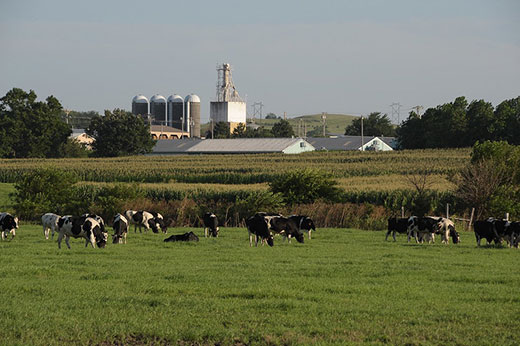
Kansas net farm income was $164,914 in 2022, ahead of the five-year period between 2016-2020 when the average was $99,497.
Kansas net farm income holds strong in 2022
KFMA reports annual look at profitability on the state’s farms
May 25, 2023
By Pat Melgares, K-State Research and Extension news service
MANHATTAN, Kan. – Despite rapid increases in input costs, widespread drought and low yield, net income on Kansas farms held strong in 2022, according to a report from the Kansas Farm Management Association.
In fact, KFMA executive director Mark Dikeman said he is “relieved that income was as high as it was” considering the adversity that many Kansas farmers faced during the past year.
This year, Dikeman notes, Kansas net farm income came in at $164,914, just below a five-year average of $173,660, but well ahead of the five-year period between 2016-2020 when the state’s net farm income averaged $99,497.
Listen to an interview by Shelby Varner with KFMA economists on the weekday radio podcast, Agriculture Today
A year ago, KFMA reported net farm income at $319,180, spurred by a combination of farmers buying inputs at lower prices and capitalizing on strong crop yields, robust grain prices and pandemic-related government payments. It was the highest net farm income average ever recorded in Kansas, according to KFMA, which has kept records since 1970.
The report on 2022 reflects average net farm income for 834 Kansas farms working with KFMA economists in six regions of the state. KFMA economists work individually with farm families to provide farm-specific production and financial management information that can be used in making decisions.
KFMA was formed in 1931.
By region, KFMA reported 2022 net farm income in Kansas as follows:
- Northwest -- $209,822
- Southwest -- $239,155
- Northcentral -- $157,352
- Southcentral -- $150,570
- Northeast -- $163,266
- Southeast -- $182,959
Dikeman said the numbers indicate a good year for Kansas farmers despite high input costs and low state average yields for fall harvested crops due to widespread drought.
“Along with strong prices, government payments and crop insurance helped to supplement low production among crop producers,” he said.
Government payments accounted for 15.3% ($25,236) and net crop insurance – payments received minus premiums paid – accounted for 56.3% ($92,781) of net farm income. The USDA’s Emergency Relief Program, which covers losses to crops due to a qualifying natural disaster, contributed an average $17,450 for those who qualified.
Dikeman said crop insurance and government payments made up 127.1% of net farm income in KFMA’s northwest region, and 126.5% in the southeast region. Meanwhile, farmers in the northeast region – which did not suffer as much from drought – paid more in crop insurance than they received.
“To me, that says the federal safety net worked in a year with difficult conditions,” Dikeman said.
High grain prices and drought that reduced the availability of forages hit Kansas livestock producers hard. Dikeman said KFMA’s numbers indicate a 13.2% increase in feed costs compared to 2021.
“However,” he noted, “the value of livestock production increased 5.1% to $137,959 (after feed cost is removed) to create profit opportunities for livestock producers.”
Dikeman said KFMA’s annual report paints a picture of Kansas agriculture, but each farmer needs to make decisions based on their own farm’s records on such factors as management strategies, production costs and market factors.
“A good set of records allows a farmer to identify their production costs, and provides a starting point for marketing planning and helps a farm manager understand their business better,” Dikeman said. “Investing time into this process is important to manage the volatility of today’s production and economic environment successfully.”
Dikeman and economists from six KFMA regions recently gave an overview of net farm income during an interview on the weekday radio program, Agriculture Today, which is available online.
More detail is also available online in the 2022 KFMA Executive Summary.

